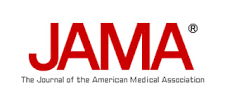Galmiche JP, Hatlebakk J, Attwood S, Ell C, Fiocca R, Eklund S, Långström G, Lind T, Lundell L; LOTUS Trial Collaborators
JAMA. 2011 May 18;305(19):1969-77.
CONTEXT:
Gastroesophageal reflux disease (GERD) is a chronic, relapsing disease with symptoms that have negative effects on daily life. Two treatment options are long-term medication or surgery.
OBJECTIVE:
To evaluate optimized esomeprazole therapy vs standardized laparoscopic antireflux surgery (LARS) in patients with GERD.
DESIGN, SETTING, AND PARTICIPANTS:
The LOTUS trial, a 5-year exploratory randomized, open, parallel-group trial conducted in academic hospitals in 11 European countries between October 2001 and April 2009 among 554 patients with well-established chronic GERD who initially responded to acid suppression. A total of 372 patients (esomeprazole, n = 192; LARS, n = 180) completed 5-year follow-up.
INTERVENTIONS:
Two hundred sixty-six patients were randomly assigned to receive esomeprazole, 20 to 40 mg/d, allowing for dose adjustments; 288 were randomly assigned to undergo LARS, of whom 248 actually underwent the operation.
MAIN OUTCOME MEASURE:
Time to treatment failure (for LARS, defined as need for acid suppressive therapy; for esomeprazole, inadequate symptom control after dose adjustment), expressed as estimated remission rates and analyzed using the Kaplan-Meier method.
RESULTS:
Estimated remission rates at 5 years were 92% (95% confidence interval [CI], 89%-96%) in the esomeprazole group and 85% (95% CI, 81%-90%) in the LARS group (log-rank P = .048). The difference between groups was no longer statistically significant following best-case scenario modeling of the effects of study dropout. The prevalence and severity of symptoms at 5 years in the esomeprazole and LARS groups, respectively, were 16% and 8% for heartburn (P = .14), 13% and 2% for acid regurgitation (P < .001), 5% and 11% for dysphagia (P < .001), 28% and 40% for bloating (P < .001), and 40% and 57% for flatulence (P < .001). Mortality during the study was low (4 deaths in the esomeprazole group and 1 death in the LARS group) and not attributed to treatment, and the percentages of patients reporting serious adverse events were similar in the esomeprazole group (24.1%) and in the LARS group (28.6%).
CONCLUSION:
This multicenter clinical trial demonstrated that with contemporary antireflux therapy for GERD, either by drug-induced acid suppression with esomeprazole or by LARS, most patients achieve and remain in remission at 5 years.
Link to abstract on PubMed: Galmiche, JP et al; JAMA. 2011 May 18;305(19):1969-77.
For PDF download of open access paper, click through the Full Text link in the upper right corner of the PubMed abstract page.


